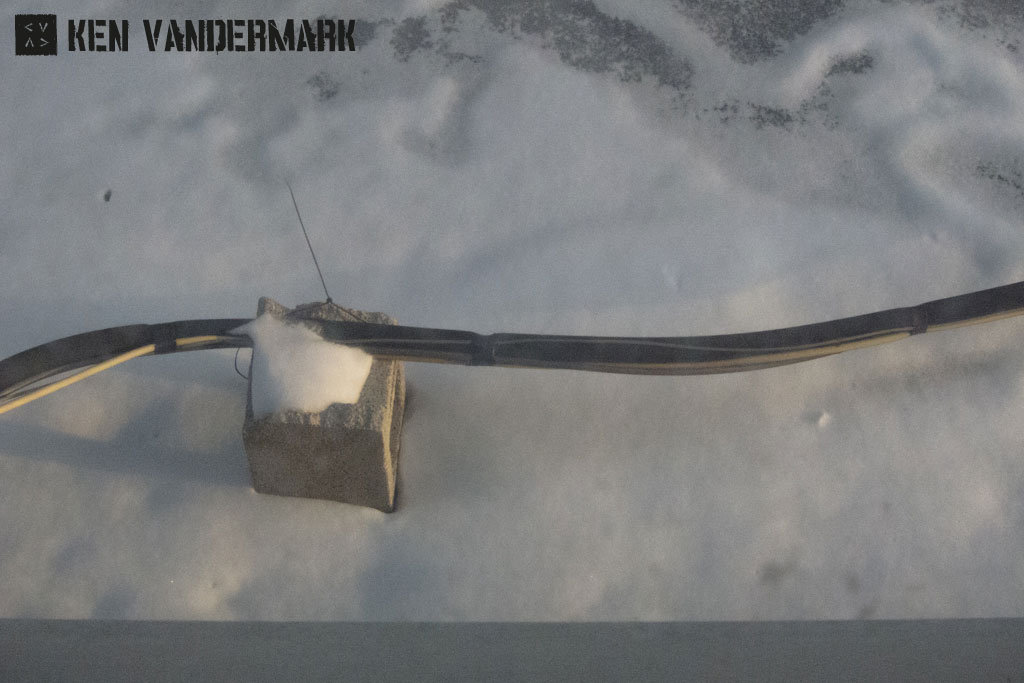

AUDIOGRAPHIC/AUDIO ONE & DKV IN EUROPE
“I believe that the only excuse we have for being musicians and for making music in any fashion is to make it differently, to perform it differently, to establish the music’s difference vis a vis our own difference.”
-Glenn Gould, from Genius Within: The Inner Life of Glenn Gould, (White Pine Pictures: 2009), directed by Michele Hozer and Peter Raymont.
05/09/14: I traveled to Kenwood Academy in Hyde Park to rehearse with their jazz band and to introduce myself to the musicians; we would all be working together on a project that Jason Moran was organizing for a performance at Chicago Symphony Center on May 30th. I played in the sax section with them on some of the pieces Jason had sent, and then soloed over an arrangement he had made of Franz Schubert’s, Der Doppelgänger. The arrangement was inspired and allowed for a number of strategies when improvising over it. Kenwood’s students were exceptional, both as musicians and in terms of their discipline- much more serious and focused than I ever was in high school. It was going to be interesting to see how Jason would pull all the elements together for his project- from his group, The Bandwagon, to the students from Kenwood, to Katie Ersnst, Theaster Gates and myself in the mix.
05/10/14: Saw Fu Manchu at Subterranean in Chicago. Their show in New York at the Bowery Ballroom in April last year was incredible, a fantastic display of riff-rock, but on this occasion they played a lot material from their new album which was pretty mediocre. The band is at its best when they are fully baked, playing like the Misfits of heavy rock (not surprisingly, both use cult movie references as source material for most of their best songs). Afterward I watched the documentary, Visual Acoustics, by Eric Bricker, that covered the career of photographer Julius Shulman. Though the film is primarily about Shulman, it is also very much about architecture, Los Angeles, and Modernism (3 major sources for Shulman’s subject matter). The film itself is a straightforward documentary, but Shulman’s images are stunning and rarely have I seen Postmodernism’s failure more clearly illustrated than through the series of photographs of Postmodern buildings that followed shots of architecture which Shulman loved (by Neutra, Lautner, the Case Study Houses…), coupled with the declaration that Shulman retired when he was faced with documenting the work of Postmodernists as the potential future of architecture.
05/11/14: After being encouraged to investigate more of Rainer Werner Fassbiner’s films by Christof Kurzmann, I watched an early one, Gods of the Plague. It reminded me a bit of Handke’s, The Goalie’s Anxiety at the Penalty Kick, written almost the same year (I’ve been trying to find a way to watch Wim Wenders’ version of that book for a while…). Bleak, claustrophobic, emotionally moving. A beautiful study in human entropy. Once again, film is a resource that inspires.
05/12/14: I finished Chris Marker: Memories of the Future by Catherine Lupton, which was filled with fascinating ideas and insights for upcoming work… I wish it wasn’t so difficult to see more of Marker’s films. Details continued to come together for the Audiographic Records launch on May 15th, which was tied to a concert with Audio One at Elastic on the same night. I did follow up work on music grants (with complete cynicism), and on the autumn work in Europe with AMM, Made To Break, Terrie Hessels, and a new trio with Elisabeth Harnik and Didi Kern. Closed out the evening with two outstanding films- Fassbinder’s, The Merchant of Four Seasons (a significant leap forward from Gods of the Plague, structurally and visually [why were Godard and Fassbinder both so amazing with their use of titles?]). Fassbinder’s use of color in this film almost made everything seem more bleak. I followed this with Hearts and Minds, a documentary made in 1974 about the U.S. involvement in Vietnam, by Peter Davis- a film that is beyond heartbreaking, beyond devastating. Exactly 40 years old, it shows that basically nothing has changed in American foreign policy since then, except that the people in power are more effective at getting what they want, no matter what the future consequences might be.
05/13/14: rewatched Hearts and Minds, and was definitely convinced that this was as major resource for Stanley Kubrick’s research for Full Metal Jacket (consider the scenes of Modine in the city in Vietnam; the helicopter sequences…). And as with any great work, Peter Davis’ film was more impressive the second time around.
05/15/14: An intense day of music began with a rehearsal at 5pm at Elastic with Audio One, which was followed by two sets by the band for a CD release concert for An International Report and The Midwest School, the first two albums by the band and for Audiographic Records, my new label which will include recordings and books. Fede Peñalva, the designer who I’ve worked with before on all of the Made To Break recordings, did a beautiful job on the albums; even with the limited size the CD covers look stunning. LP versions will be released in August to coincide with the Audio One concerts planned that month. The performance went well overall and was played to a packed house with no train wrecks on the charts and some really special moments (Jen Paulson’s solo on “Vivre Sa Vie” was gorgeous and completely blew my statement on that piece out of the water), but by the end of the night I could sense that exhaustion was starting to undermine the ensemble’s concentration. Even so, during the Art Ensemble’s “Theme De Yoyo,” the final tune of the night, Mars Williams ripped an unbelievable solo out of the air, raising the roof after nearly 6 hours of concentrated work on music that night.
© 2024 Ken Vandermark – musician & composer | Disclaimer